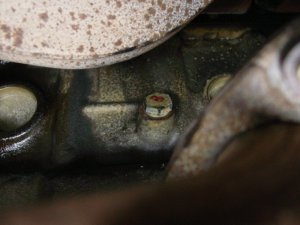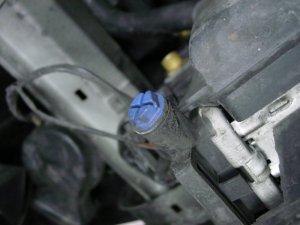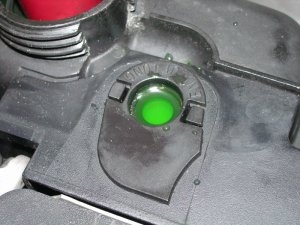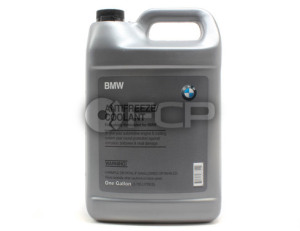Cooling system maintenance often goes undone. While BMW recommends a cooling system flush every 2-3 years, people generally will go 5+ years. The reason to you need to change your coolant every couple of years is the coolant becomes old and exhausted and can cause irreversible damage to your cooling system components. If anyone reading this has ever bought a car with a neglected engine, you know what I am talking about.
Good Components: Properly maintaining a cooling system requires a few things: the correct amount of coolant, a functioning radiator to exchange the heat, an air flow source, a water pump to circulate coolant through the engine, and finally a thermostat to regulate temperature. Also, your coolant must also have the correct mixture to transfer heat, not freeze during cold weather, and act as a corrosion inhibitor; coolant starts loosing these characteristics with age.
Additives: The use of additives in coolant can benefit you in a few different ways. Firstly, and most obviously they help in the transfer of heat from the coolant to the surfaces in the radiator. Even in cars that have perfectly functioning and maintained cooling systems, these additives add a small extra level of protection in case a thermostat or something of the like fails. Secondly, they reduce cavitations and foaming from the water pump pushing out fluid at a rapid rate. Foaming can cause damage to aluminum surfaces. Lastly, the additives help maintain corrosion by balancing the pH levels. An example of a good coolant additive is Redline Water Wetter.
Obviously, checking your coolant level regularly is a given for maintaining a proper coolant level. And it is normal for your BMW to loose a little bit of coolant over a bit of time; the coolant will evaporate from the reservoir. But if your loosing a noticeable amount over a short amount of time, this will signify a leak somewhere in the system. Check all hoses, water pump and thermostat housings for seeping or weeping gaskets, and the radiator for leaks. You don't want to get complacent with adding fluid every other day; find the source. A small leak can turn into a catastrophe the next time your on your way to work or heading across the state. If there are no signs of leaks the lack of fluid could have been cause by the fluid boiling over. In this case keep an eye on the fluid level.
If you've decided your coolant needs changing, it's an easier task than you may think. Its a messy task though, and I recommend you don't wear your finest suit.
Items needed:
- Large drain pan - at least 3 gallon capable. These engines hold a lot of coolant.
- New BMW Coolant - 4 cylinder cars need 7 quarts of fluid, 6 cylinder cars need 10.6 quarts of fluid, and M3's will need 11.1 quarts of fluid.
- Funnel
Draining the Coolant
- With the car cold, jack up the front end of your vehicle and place on jack stands. Please refer to your owners manual for proper jacking etiquette.
- Turn your ignition to the on position and set the heat to the highest setting while keeping the fan at the lowest setting. Do not start the car. This will open the passages to the heater core allowing the coolant to drain out of it.
- Looking at the passenger side of the engine under the exhaust manifold there will be a drain plug for the coolant. With a drain pan underneath the plug remove it and let coolant drain out. When all the coolant is out of the block, replace the plug and torque to 18 ft/lb.

- Moving to the radiator, there should be a small drain plug at the bottom of the radiator. Remove and drain the fluid from the radiator. Then replace the plug, try not to over tighten the plug, the torque required is very small so just snug tighten with your hand.

Filling and Bleeding the System
- Remove the small plastic bleed screw. Just to the right of the radiator cap.

- With a large funnel in the overflow tank, slowly fill the car with new coolant. Be sure to use a 50/50 mixture of coolant and distilled water. Not spring water or tap water, these waters have impurities in them. Distilled water is 100% clean H2O. Fill the system slowly, it takes a little bit of time for the coolant to reach the whole system.
- When the system is full of coolant you need to bleed the air out of it. This only applies to cars with expansion tanks that are attached to the side of the radiator. BMW cars with separate expansion tanks are self bleeding. Now, doing this is going to make quite a mess, so have a large drain pan on the ground and plenty of rags handy. With the bleed screw removed fill the expansion tank until coolant starts coming out of the bleeder hole. Continue filling until there are no more bubbles coming out of the bleeder hole.
- When there are no more bubbles, secure the bleed screw back into place. Be sure to not over tighten.
- Once you have everything cleaned up and made sure everything is tightened correctly you can lower the car.
- Start the car and let it get to operating temperature, then shut it down and let it cool.
- Check the coolant level and top off if necessary.
Flushing your cooling system is very important to the function of the cooling system components. It may be a messy job, but it ensures that your car will survive the summer heat, and having a clean unclogged heater core means you stay warm in the winter time.











